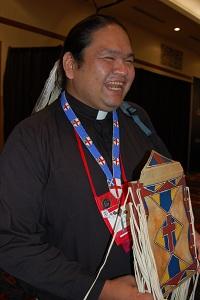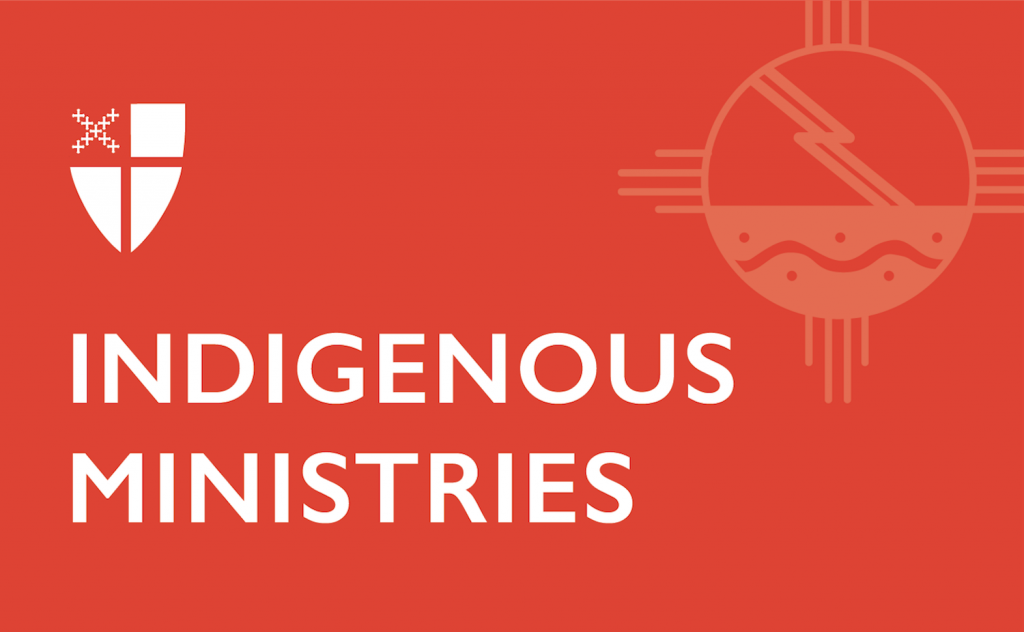Doctrine of Discovery Lament Offering 3: Being an Indian in the 21st Century

By: Terry Star
Working With Youth
My name is Terry Starr, and I’m a deacon serving in the Episcopal Diocese of North Dakota. My parents have always been involved with community activities for youth. My extended family includes the children and teens from the many communities we’ve lived in. Since high school, I, too, have been involved in work with teens; I’ve made a career out of working with teens. I worked as a teacher and tutor in a high school for seven years. I served as cultural director for a group home in Spokane. I worked as a treatment technician for a juvenile treatment center for Native youth. Most recently, and for the past eight years, I have been involved in youth ministry and have been employed as an area director for a youth ministry program in partnership with my congregation. All of these experiences have given me the opportunity to be in the midst of their lives, to witness their struggles and to encourage their gifts.
Struggles That Our Youth Are Facing
One of my boys, Matthew, was asked what he had planned for his life. He replied, “Well, my uncles are drunks and my cousins are drunks, and I’ll probably be a drunk too.” Another of my boys, Thomas, was homeless. He spent the night in a cousin’s house because he had no place else to go on a cold spring night. The house exploded, and Thomas suffered severe burns over 25% of his body, mostly because he was the last one out of the house, making sure the babies in the house were safe. His cousin, one of my girls, also homeless, died a few months later from burns she suffered in the fire.
Many of the teens I work with are living in overcrowded houses. Finding three or four families living in a three-bedroom house is very common. High-school students in these living conditions don’t find a quiet study place for homework. Students are often tardy or absent from school because their home was the party place the night before. Incest and rape is a common and sad occurrence in these living conditions. Suicide rates are at an extreme high, higher than any other cultural community, because our teens just don’t see a way out.
Gifts of Youth
Life in our communities isn’t all bleak. My experiences working with our youth has also given me the awesome witness of their gifts and talents. Shawn, Trent, Austin, Martin, Draven, and Cole are a few of my boys who choose to live “above the influence.” Though they still stay up all night, they choose to write lyrics, kill zombies, develop stories – all without alcohol or other drugs.
This group of boys help me set up the youth group space, and return it back to order. They gather together with “chip-ins” for gas to take a “guys’ day out” with their Young Life leaders in a youth group van. Ferby and Trent went with me to Minot, North Dakota, where we installed insulation in Jody’s house. Jody’s house was ruined during a major flood that destroyed a third of the city. Jody wasn’t eligible for any of the flood relief assistance, but through Episcopal Relief & Development, and with the help of people like Ferby and Trent, her house was saved and rebuilt. Another group of teens, led by Ferby and his Young Life leaders, helped build a sandbag wall to save a home from flooding in Bismarck, North Dakota. Ferby went door to door in his community, waking up his peers to get in the van to go help build the wall.
The Spirit Journey Youth run their own center, the Hozhoni Youth Center in Arizona. Their director is a young man whose life was changed by his participation in the youth group. It is a great joy to read their daily journals on Facebook. I find encouragement in my own life by reading their stories.
Being a Native in the 21st Century is a very different experience than what our ancestors lived.
Generational Cultural Dynamics
My grandmother grew up in an era of the church that held the belief that indigenous peoples had to put away their cultural identities in order to be Christians, and that we had to be Christian in order to show that we had been assimilated into the mainstream American culture. When Grandma Lillian sent me to school, she told me to pay attention to my teachers so they could teach me how to survive in the Wasicu world. She taught me about our cultural ceremonies, customs, and family history, but told me I had to keep it secret because we need to learn how to be Indians in this new world. I am a deacon in this church. I am learning to speak my language through the liturgy and music that has been translated into Dakota. I wear my feathers and beadwork during Sunday worship ceremonies. Today’s teens have access to the entire world through satellite TV and the Internet. Some of my teens tell me about their online gaming friends from all over the country. Some of my current teens are Facebook friends with my adopted relatives on other reservations.
Mission groups that come to the Standing Rock reservation aren’t coming to the reservation to save the poor Indian kids, but rather to make new friends and tear down the stereotypes and institution of racism. As I am serving as deputy here at General Convention, 800 miles away from home, I am also coordinating camp recruitment via Facebook, Twitter, and texting with staff and teens at home.
While it can be easy for us to focus on the challenges of being a Native in the 21st century, I believe it is far more important to realize that we are a changing and growing culture with rays of hope shining through. I am excited about our youth and the future they build for our indigenous people. Black Elk said that it would take seven generations from Wounded Knee before the Sacred Hoop can begin to heal. I believe we are witnessing the beginning of this healing.

